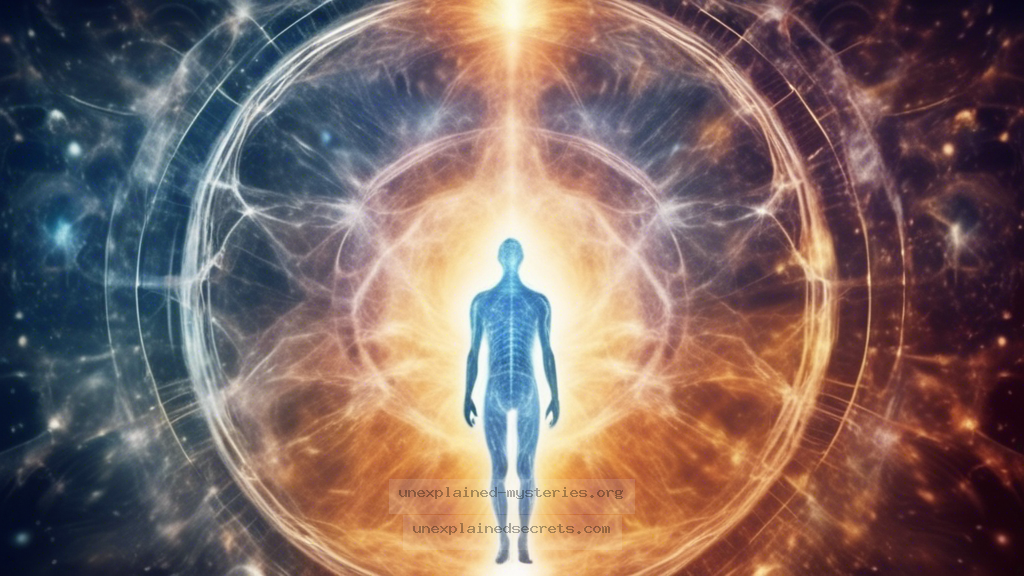What Can We Learn About Consciousness from Consistent Near-Death Experience Reports?
What Can We Learn About Consciousness from Consistent Near-Death Experience Reports?
The phenomenon of Near-Death Experiences (NDEs) has captivated researchers, medical professionals, and spiritual seekers alike for decades. These profound experiences often occur when individuals are close to death or have been declared clinically dead, only to return to consciousness with vivid recollections of their experiences. The consistency of these reports raises intriguing questions about the nature of consciousness and what happens after we die. This blog post delves into the compelling mystery of NDEs and what they reveal about consciousness, spirituality, and the afterlife.
Introduction to Near-Death Experiences
Near-Death Experiences are characterized by a range of phenomena that individuals report during life-threatening situations. Common elements include feelings of peace, out-of-body experiences, encounters with deceased loved ones, and a review of one’s life. Studies show that approximately 10-20% of people who have come close to death report experiencing some form of an NDE. The significance of these experiences extends beyond mere anecdotal accounts; they challenge our understanding of consciousness and the boundaries of life and death.
Historical Context of NDEs
The concept of NDEs is not a modern invention. Historical accounts date back to ancient civilizations, including the Egyptians and Greeks, who described similar experiences in their texts. In the 20th century, NDEs gained scientific attention, particularly after Dr. Raymond Moody’s groundbreaking book, “Life After Life,” published in 1975. Moody’s work introduced the idea that NDEs could provide insights into the afterlife, sparking both scientific inquiry and philosophical debates.
Core Concepts and Theories of NDEs
At the heart of the NDE phenomenon lies the question of consciousness. Is consciousness a byproduct of brain activity, or can it exist independently of the physical body? Several theories have emerged to explain NDEs:
- Biological Perspective: Some scientists argue that NDEs result from physiological responses to trauma, such as the release of endorphins or hypoxia (lack of oxygen). This theory suggests that the experiences are brain-generated illusions.
- Transcendent Perspective: Others posit that NDEs are genuine encounters with a spiritual realm, indicating the existence of consciousness beyond physical death. This aligns with various religious beliefs about the afterlife.
- Dualism: Philosopher René Descartes famously suggested that the mind and body are distinct entities. This view supports the idea that consciousness can exist apart from the body, a notion echoed in many NDE reports.
Common Elements of NDEs
Despite the diversity of individual experiences, certain elements recur in many NDEs. According to Dr. Bruce Greyson, a leading researcher in the field, these commonly reported features include:
- Peaceful feelings and a sense of detachment from the body
- Bright, often overwhelming light
- Life review, where individuals see significant moments from their lives
- Encounters with deceased individuals or spiritual beings
- A feeling of being pulled toward a boundary or limit
Real-World Examples of Documented NDEs
Numerous documented cases illustrate the profound nature of NDEs. One notable example is the case of Dr. Eben Alexander, a neurosurgeon who experienced a coma due to meningitis. During his near-death state, he described a vivid journey through a realm of consciousness that he had previously dismissed as impossible due to his scientific training. Alexander’s account has been widely discussed in both medical and spiritual communities, as it raises questions about the relationship between the mind and the brain.
| Case | Experience Summary | Significance |
|---|---|---|
| Dr. Eben Alexander | Journey through a vivid spiritual realm during a coma. | Challenges scientific understanding of consciousness. |
| Anna’s NDE | Out-of-body experience and life review. | Highlights common NDE elements across different individuals. |
Scientific Research on NDEs
Research into NDEs has expanded significantly, with studies exploring the psychological, neurological, and spiritual aspects. A pivotal study published in the journal “Resuscitation” analyzed NDE reports from cardiac arrest survivors. The findings revealed that about 10% of participants experienced clear memories during their clinical death, suggesting a level of consciousness that defies current scientific explanations. This research invites further examination of how consciousness operates during extreme conditions.
Practical Implications of NDEs
The implications of NDEs extend beyond mere curiosity. They challenge our understanding of life, death, and what may lie beyond. For those who have experienced NDEs, many report profound changes in their lives, including:
- Increased empathy and compassion
- A reduced fear of death
- Enhanced spiritual beliefs and practices
💡 Key Insight: NDEs often lead to transformative experiences, impacting individuals’ perspectives on life and spirituality.
Alternative Perspectives on NDEs
While many view NDEs as a glimpse into the afterlife, others remain skeptical. Some argue that NDEs are purely psychological phenomena, resulting from the brain’s response to trauma. This skepticism is often rooted in a scientific worldview that prioritizes empirical evidence over subjective experiences. Critics also highlight that many NDE accounts can be explained through existing neurological and psychological frameworks, suggesting that what is perceived as spiritual may simply be the brain’s coping mechanism in moments of crisis.
Common Misconceptions About NDEs
Despite growing interest in NDEs, several misconceptions persist. One common belief is that all NDEs are positive and life-affirming. However, some individuals report distressing or negative experiences, often referred to as “hellish” NDEs. These can be just as transformative, leading to significant personal growth.
⚠️ Notable Fact: Not all NDEs are positive; some individuals report distressing experiences that challenge their beliefs and lead to personal transformations.
Best Practices for Investigating NDEs
For those interested in studying NDEs, a multidisciplinary approach is essential. Researchers should consider psychological, neuroscientific, and spiritual perspectives to gain a holistic understanding of the phenomenon. Best practices include:
- Conducting longitudinal studies to track changes in individuals post-NDE
- Utilizing qualitative research methods to capture the depth of personal narratives
- Engaging with both medical professionals and spiritual leaders to broaden the discourse
The Future of NDE Research
The study of NDEs is still in its infancy, but ongoing research promises to deepen our understanding of consciousness. With advancements in neuroscience and a growing openness to exploring the spiritual dimensions of human experience, we may soon uncover more about the mysteries of life after death. As researchers continue to document and analyze NDE accounts, we may find answers to the age-old questions about the nature of existence and consciousness.
Conclusion: The Mystery of Consciousness and NDEs
The consistent reports of Near-Death Experiences offer a fascinating glimpse into the mysteries surrounding consciousness and the afterlife. While science continues to grapple with the implications of these experiences, they invite us to reconsider our understanding of life, death, and what may lie beyond. As we explore this enigmatic phenomenon, we find ourselves at the intersection of science, spirituality, and the enduring human quest for meaning. The journey into understanding consciousness is far from over, and NDEs may hold the key to unlocking some of its most profound secrets.
Other Articles
Recent Posts
- What Happened to Flight MH370? The Conspiracy Theories That Still Haunt Us
- What Secrets Lurk Within the Walls of the Infamous Trans-Allegheny Lunatic Asylum?
- What Evidence Supports the Existence of Bigfoot in the Pacific Northwest?
- What Happened to the Indus Valley Civilization? Unraveling the Mysteries of Ancient Urban Life
- Can Telepathy Be Scientifically Proven Through Laboratory Evidence?







